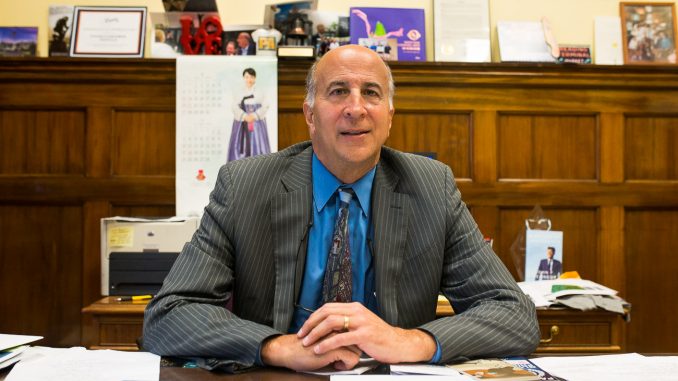
Daniel Yusupov, a first-year medical student, didn’t know the depth of the opioid epidemic in the Kensington neighborhood before working about two hours in Temple Health’s Episcopal Campus in January.
“Every demographic is being affected at this point,” Yusupov said. “The first patient I talked to was in his 70s, and that was not a picture I had in my mind of somebody who used opioids.”
Yusupov and 21 other Lewis Katz School of Medicine first- and second-year students spent an hour each in the hospital for clinical hours, and shared their experiences with “24 hours in the life of an opioid epidemic,” a Medium article published on April 14 with their stories of observing treatment of patients with substance use disorder.
Kensington is considered “ground zero” for Philadelphia’s opioid epidemic, and city lawmakers are considering approving Safehouse, a safe injection site, to be built in the neighborhood.
However, Philadelphia 1st District Councilman Mark Squilla introduced a bill at the end of March that would change some of Kensington’s zoning designations, temporarily blocking Safehouse’s construction on Hilton Street near Kensington Avenue. Squilla is pursuing the bill because of Kensington residents’ negative reactions when former Gov. Ed Rendell, a Safehouse board member, announced a potential lease agreement on March 21, the Inquirer reported.
The bill would ban the construction of any buildings other than single-family homes on most of the 1800 block of Hilton Street, which is near the Allegheny SEPTA station on the Market-Frankford Line, and Council will have a hearing to discuss the bill in June, Squilla said. If the bill passes, Safehouse would need a zoning variance, which requires a public hearing.
Residents worry Safehouse would increase criminal activity and violence in the area, Squilla said. Because the safe injection site will not be providing illegal substances, it could potentially form an illegal substance market around it, he said.
“You have to question what [Safehouse’s] real mission is,” Yusupov said. “These sites can reduce hospital and city costs, which could be relocated to other important things, as well as reduce harm in substance use. But I don’t think safe injection sites are the solution, more like a band-aid to the issue at hand.”
Safehouse’s potential lease on Hilton Street took residents by surprise, resulting in backlash against the proposed site, Squilla said. Board members did not properly explain why the site should be located in the area, he added.
“They didn’t have a chance to work with the community to explain themselves before the message got out there,” he added. “And in any politics or anything that we do, if people get information that they can’t trust you, even if you’re doing something good, they push back and that’s what happened here.”
If Safehouse board members decide to put the facility in the Kensington neighborhood, they need to meet with residents to discuss what the site will look like, what it would entail and its impact on residents, Squilla said.
In addition to “supervised consumption” and overdose prevention services, Safehouse would also provide on-site initiation of medication-assisted treatment, wound care, referrals for primary care, social services and housing opportunities, according to the organization’s website. Safehouse would privately manage supervised injections and the city would support the medical services, Squilla said.
There needs to be better communication between Safehouse and Kensington residents, said Nicole Bixler, a Port Richmond resident and founder of Operation In My Backyard, a harm reduction outreach and advocacy group that supports Safehouse being located in Kensington.
“Having open community forums that are not put together by someone with an agenda against Safehouse would improve the communication,” Bixler said. “I understand that the residents are angry, but anger usually stems from fear, although the residents do have valid concerns.”
Safehouse’s board members should facilitate a forum to share exactly how the safe injection site would work, Bixler said. Then, residents would see its benefits, like preventing overdoses, she said.
Putting a safe injection site in Kensington will monumentally improve the conditions of people experiencing substance use disorder and homelessness in the streets, said Timothy Mulhern, a 2018 public health alumnus who is a medication-assisted treatment case manager at Pathways to Housing, a harm reduction organization that helps people experiencing chronic homelessness.
“People are participating in harmful and risky activities,” Mulhern said. “If people are using, it should be done as safely as possible to keep people alive. A safe injection site would be a public health and harm reduction intervention, which I think is necessary for the community.”
Mulhern assesses participants with opioid use disorder and determines treatment options that are adequate for them, he said. He interned at the harm reduction organization Prevention Point Philadelphia shortly after graduation.
“I care about harm reduction and I care about people who use drugs because they are worthy of successful health care and services that will help them stay alive,” Mulhern added. “At the end of the day, overdose deaths are preventable.”


Be the first to comment